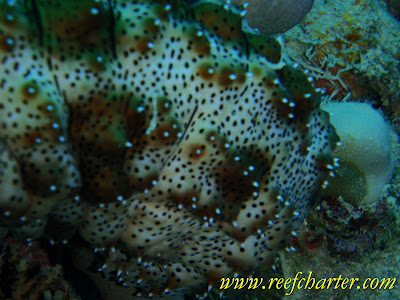
Some of the earliest form of trade between Asia and indigenous Australia was the trade of sea cucumbers, which are highly regarding in some forms of eastern medicine and as a food dish.
The Reef is Your Own! Come and See What You're Missing!

Cairns Turtle Rehabilitation Centre was established as a facility designed for treatment of ill and injured turtles in Far North Queensland and Cape York Peninsula. The centre works towards the recovery of threatened marine turtle species in conjunction with a local veterinary clinic. Since 2002, 21 turtles have been successfully rehabilitated and released in the region where they were found. Unfortunately 24 turtles have died during attempts at rehabilitation, a not unexpected result when considering the poor condition of these animals when brought into the centre. The majority of the stranded animals brought to the centre from Great Barrier Reef waters had ‘floaters disease’ with only one suffering from fibropapilloma virus. Qantas -Link Airlines has assisted in transport of turtles from the west coast of Cape York Peninsula where the Napranum Land Protection Unit rescued many stranded turtles. These have been injured due to entanglement in ‘ghost nets’. Injuries can be so severe that flippers have been lost or had to be amputated.
Donations Can be made at:
Marlin Coast Veterinary Surgery
Cnr Aropa St & Cook Hwy, Trinity Beach, QLD 4879
Phone: +61 (0)7 4057 6033
Adult Green Turtles are herbivorous. They almost-exclusively feed on various species of seagrasses and seaweed. While mature green turtles are entirely herbivorous, juveniles are known to eat a variety of marine invertebrates. Their diet of plant matter grows larger as they age, until as mature adults they become complete herbivores.
As large and well-protected animals, adult green turtles have few enemies and even fewer predators. Only human beings and the larger sharks are known to feed on the sea turtle. Tiger sharks are known predators of adult green turtles. Juvenile turtles and recently emerged hatchlings have significantly more predators, including sharks, crabs, small mammals and shorebirds.
No one ever talks about the poor old damsel fish. But they are very important in the reef ecosystem, eating algae allowing for reef regrowth. Damselfish are one of the most abundant groups of coral reef fishes. They display remarkable diversity in habitat preferences, feeding habits, behaviour and colouration. Most species are highly territorial. Algal-eating species zealously defend their ‘plot’ against intruders, regardless of size. These algal feeders. These algal feeders generally have drab colour patterns whereas the plankton-feeding damsels are brightly coloured. Damselfish eggs are laid on coral rock and are guarded by the male until they hatch in 2-14 days. All damselfish, except the anemonefish (genus Amphiprion and Premnas), change sex from male to female. The anemonefish goes through a reverse sex change from male to female.